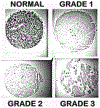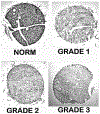Zinc: The Wonder Drug for the Treatment of Carcinomas
- PMID: 32587956
- PMCID: PMC7316362
- DOI: 10.31080/ascb.2020.04.0223
Zinc: The Wonder Drug for the Treatment of Carcinomas
Abstract
Evidence is evolving that support the relationship that all carcinomas exhibit the following important relationships: The malignant cells exhibit a significant decreased zinc compared to the normal cells. The higher zinc levels that exist in the normal cells are cytotoxic in the malignant cells. The decrease in zinc is due to the down regulation of the ZIP-family zinc uptake transporter. These cells are as "ZIP-deficient/decreased zinc" malignancies. This provides a target for a chemotherapy that can restore the high zinc levels that will manifest cytotoxic effects in the malignant cells. In order to achieve this, a vehicle that facilitates the uptake and accumulation of zinc in the ZIP-deficient cells is required. The zinc ionophore, clioquinol, exhibits the properties that will provide these requirements. This is demonstrated by the treatment of a patient with 3% Clioquinol Cream, which successfully suppressed the progression of androgen-dependent prostate cancer. This treatment should also be efficacious for pancreatic cancer, liver cancer, breast cancer, thyroid cancer, kidney cancer, stomach cancer, gall bladder cancer, and lung cancer; which are carcinomas that exhibit decreased zinc. Thus, it is appropriate to describe that "Zinc is the wonder drug for the treatment of carcinomas".
Keywords: Carcinomas; Clioquinol; Treatment; Zinc.
Figures












Similar articles
-
A Proposed Efficacious Treatment with Clioquinol (Zinc Ionophore) and Cabergoline (Prolactin Dopamine Agonist) for the Treatment of Terminal Androgen-independent Prostate Cancer. Why and How?J Clin Res Oncol. 2019;2(1):https://asclepiusopen.com/journal-of-clinical-research-in-oncology/volume-2-issue-1/1.pdf. J Clin Res Oncol. 2019. PMID: 30828702 Free PMC article.
-
Zinc Ionophore (Clioquinol) Inhibition of Human ZIP1-Deficient Prostate Tumor Growth in the Mouse Ectopic Xenograft Model: A Zinc Approach for the Efficacious Treatment of Prostate Cancer.Int J Cancer Clin Res. 2016;3(1):037. doi: 10.23937/2378-3419/3/1/1037. Epub 2016 Jan 9. Int J Cancer Clin Res. 2016. PMID: 26878064 Free PMC article.
-
Evidence that Human Prostate Cancer is a ZIP1-Deficient Malignancy that could be Effectively Treated with a Zinc Ionophore (Clioquinol) Approach.Chemotherapy (Los Angel). 2015 Jun;4(2):152. doi: 10.4172/2167-7700.1000152. Chemotherapy (Los Angel). 2015. PMID: 26273543 Free PMC article.
-
Decreased zinc in the development and progression of malignancy: an important common relationship and potential for prevention and treatment of carcinomas.Expert Opin Ther Targets. 2017 Jan;21(1):51-66. doi: 10.1080/14728222.2017.1265506. Epub 2016 Dec 5. Expert Opin Ther Targets. 2017. PMID: 27885880 Free PMC article. Review.
-
A comprehensive review of the role of zinc in normal prostate function and metabolism; and its implications in prostate cancer.Arch Biochem Biophys. 2016 Dec 1;611:100-112. doi: 10.1016/j.abb.2016.04.014. Epub 2016 Apr 27. Arch Biochem Biophys. 2016. PMID: 27132038 Free PMC article. Review.
Cited by
-
Emerging Perspectives in Zinc Transporter Research in Prostate Cancer: An Updated Review.Nutrients. 2024 Jun 26;16(13):2026. doi: 10.3390/nu16132026. Nutrients. 2024. PMID: 38999774 Free PMC article. Review.
-
Zinc in Prostate Health and Disease: A Mini Review.Biomedicines. 2022 Dec 10;10(12):3206. doi: 10.3390/biomedicines10123206. Biomedicines. 2022. PMID: 36551962 Free PMC article. Review.
-
Age-Related Changes in Zinc, Copper and Selenium Levels in the Human Prostate.Nutrients. 2021 Apr 21;13(5):1403. doi: 10.3390/nu13051403. Nutrients. 2021. PMID: 33919444 Free PMC article.
-
Zinc Deficiency as a General Feature of Cancer: a Review of the Literature.Biol Trace Elem Res. 2024 May;202(5):1937-1947. doi: 10.1007/s12011-023-03818-6. Epub 2023 Sep 2. Biol Trace Elem Res. 2024. PMID: 37658952 Free PMC article. Review.
-
Effects of Trace Elements on Endocrine Function and Pathogenesis of Thyroid Diseases-A Literature Review.Nutrients. 2025 Jan 22;17(3):398. doi: 10.3390/nu17030398. Nutrients. 2025. PMID: 39940256 Free PMC article. Review.
References
-
- Vallee B and Falchuck K. “The biochemical basis of zinc physiology”. Physiological Reviews 73 (1993): 79–118. - PubMed
-
- Zaichick VY., et al. “Zinc in human prostate gland: Normal, hyperplastic and cancerous”. Journal of Radioanalytical and Nuclear Chemistry 217 (1997): 157–161.
Grants and funding
LinkOut - more resources
Full Text Sources
